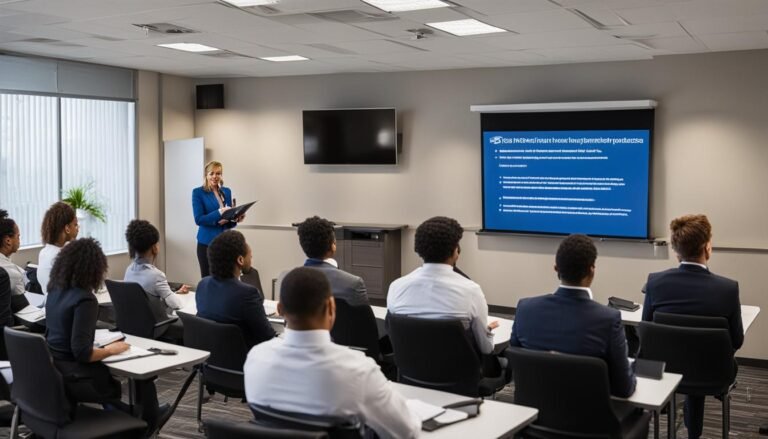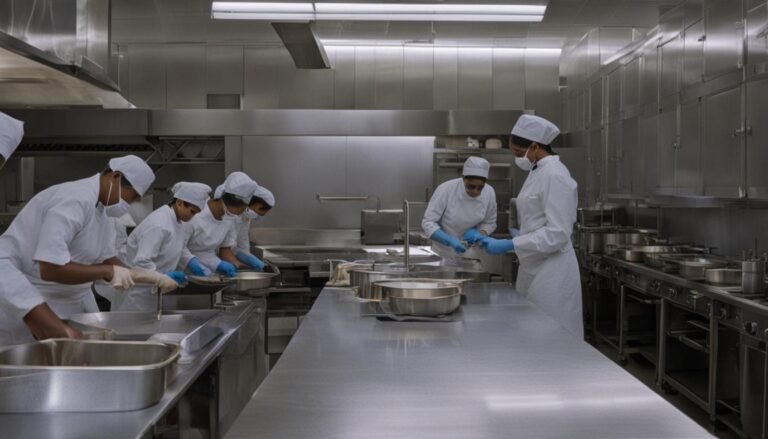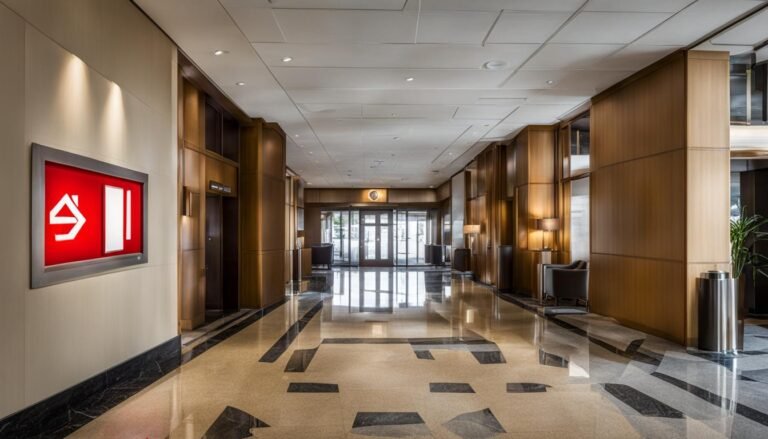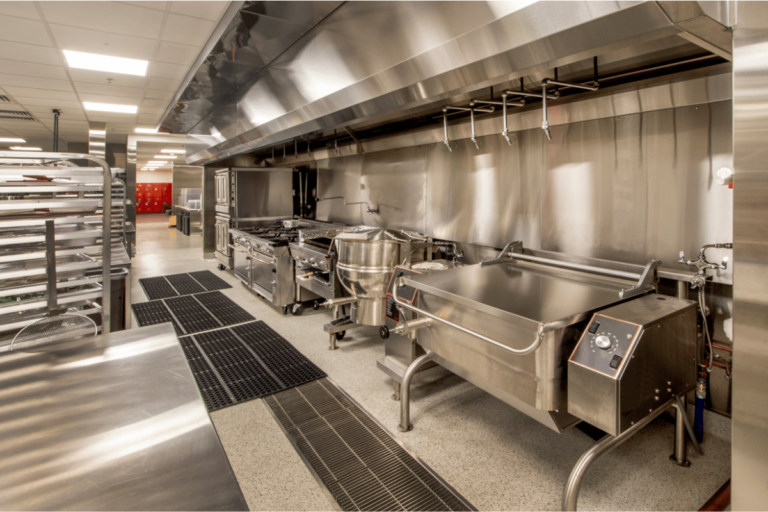Enhancing Hospitality: Creating a Safe Work Environment for Hotel Employees
The hospitality industry is a bustling and dynamic sector, with hotel employees working tirelessly to ensure the comfort and satisfaction of their guests. However, amidst the whirlwind of hospitality operations, it is crucial to prioritize the safety and well-being of these dedicated individuals. Creating a safe work environment for hotel employees is not only essential for their protection but also for the smooth functioning of the entire establishment.
Hotel staff, particularly housekeepers, face unique challenges that can put them at risk. Working alone in guest rooms and encountering transient guests can expose them to situations of vulnerability, including sexual harassment or aggression. By establishing a culture of workplace safety, hotels can mitigate these risks and create a secure environment for their employees.
Implementing safety training programs and maintaining proper record-keeping practices can significantly reduce workers’ compensation costs and improve overall safety performance. The leadership team plays a crucial role in enforcing safety values and strategies, ensuring that safety becomes an integral part of the hotel’s organizational culture.
Key Takeaways:
- Creating a safe work environment is crucial for the well-being of hotel employees.
- Implementing safety training programs can reduce workers’ compensation costs.
- Leadership plays a vital role in enforcing safety values and strategies.
- Promoting a culture of workplace safety ensures smooth business operations.
- Establishing safety protocols can protect hotel staff from potential risks.
The Financial Case for Workplace Safety in Hotels
Ensuring workplace safety in hotels not only protects employees but also makes financial sense for the business. By implementing comprehensive safety measures, hotels can reduce workers’ compensation costs and minimize the indirect costs associated with workplace injuries. Additionally, a focus on workplace safety can help lower worker turnover, contributing to overall operational efficiency.
Workers’ compensation costs can be a significant financial burden for hotels. By improving safety training and reducing workplace injuries, hotels can lower these costs. This includes both direct costs, such as compensation and medical expenses, as well as indirect costs like hiring and training replacement workers. By minimizing these costs, hotels can allocate resources more effectively and improve their bottom line.
Enhancing workplace safety also contributes to reducing employee turnover, which is particularly important in the current labor shortage. When employees feel safe and valued in their work environment, they are more likely to stay with the organization, reducing recruitment and training costs. This stability in the workforce leads to higher productivity and customer satisfaction, ultimately benefitting the hotel’s financial performance.
| Financial Benefits of Workplace Safety in Hotels | |
|---|---|
| Reduced workers’ compensation costs | Lowered expenses related to compensation and medical treatment for workplace injuries. |
| Minimized indirect costs | Decreased expenses associated with hiring and training replacement workers due to injuries or turnover. |
| Decreased employee turnover | Reduced recruitment and training costs, improved productivity, and increased customer satisfaction. |
Investing in workplace safety training and initiatives demonstrates a commitment to employee well-being and elevates the overall work culture. This can boost employee morale, job satisfaction, and engagement, leading to increased productivity and customer satisfaction. Moreover, a strong emphasis on safety helps create a positive brand image, attracting both customers and potential employees who prioritize a safe and secure work environment.
In conclusion, prioritizing workplace safety in hotels not only protects employees from harm but also delivers significant financial benefits. By reducing workers’ compensation costs, minimizing indirect expenses, and lowering employee turnover, hotels can enhance their financial performance and create a safer and more productive working environment for all.
Enforcing Workplace Safety in the Hospitality Industry
Creating a shared culture of workplace safety is essential in the hospitality industry. By implementing effective emergency processes, safety leadership strategies, and fostering positive attitudes toward organizational safety, hotels can ensure a safe work environment for their employees.
One crucial aspect of enforcing workplace safety is establishing clear emergency processes. Hotels should have well-defined protocols in place for emergencies such as fires, natural disasters, or medical incidents. This includes training employees on evacuation procedures, ensuring the availability of emergency exits and equipment, and conducting regular drills to test the effectiveness of these processes.
Another key factor in enforcing workplace safety is implementing safety leadership strategies. This involves consistent communication and reinforcement of safety values and procedures from management at all levels. Safety leaders should lead by example, actively promote safety initiatives, and ensure accountability among employees for following safety protocols. By fostering a culture where safety is a priority, hotels can create a shared responsibility for workplace safety.
Attitudes toward organizational safety play a significant role in ensuring workplace safety. Hotels should encourage an open dialogue between employees and management, where concerns regarding safety can be addressed and appropriate actions taken. Regular communication and training sessions can help reinforce the importance of safety, increase employee awareness, and foster a positive attitude towards organizational safety.
Table: Benefits of Enforcing Workplace Safety
| Benefits | Explanation |
|---|---|
| Reduced accidents and injuries | Enforcing workplace safety measures significantly reduces the risk of accidents and injuries among hotel employees. |
| Improved employee morale | Creating a safe work environment boosts employee morale, leading to increased job satisfaction and productivity. |
| Lower workers’ compensation costs | By preventing accidents and injuries, hotels can reduce workers’ compensation costs and save money in the long run. |
| Enhanced reputation | A commitment to workplace safety enhances a hotel’s reputation as a responsible and caring employer, attracting top talent and loyal customers. |
Enforcing workplace safety in the hospitality industry requires a comprehensive approach that encompasses emergency processes, safety leadership strategies, and fostering positive attitudes toward organizational safety. By prioritizing safety, hotels can create a work environment where employees feel protected and valued, ultimately leading to improved performance and success in the industry.
Developing a Workplace Safety Culture in Hotels
Creating a strong workplace safety culture is essential for hotels to ensure the well-being of their employees. This culture is built upon the development of safety values and the effective execution of safety procedures. By focusing on these aspects, hotels can foster a safe working environment that promotes the overall safety and security of their staff.
The first step in developing a workplace safety culture is to continuously improve existing safety procedures. This involves regular assessments and updates to ensure that safety protocols are up to date and aligned with industry standards. By staying proactive and responsive to potential risks, hotels can minimize the likelihood of accidents and injuries.
Central to the development of a safety culture is the embrace of safety as a core value within the organization. Supervisors and management should lead by example, consistently implementing safety procedures and demonstrating their commitment to safety. This creates a sense of responsibility and accountability among employees, reinforcing the importance of adhering to safety protocols.
Employee participation and feedback are also crucial in building a safety-oriented culture. Hotels should encourage their employees to actively engage in safety initiatives, providing them with opportunities to share their ideas, concerns, and suggestions. This not only fosters a positive attitude towards organizational safety but also enables continuous improvement in safety practices.
| Benefits of Developing a Workplace Safety Culture | Methods for Developing a Workplace Safety Culture |
|---|---|
| – Reduced accidents and injuries – Improved employee morale and satisfaction – Increased productivity and efficiency – Lower workers’ compensation costs |
– Continuously improving safety procedures through assessments and updates – Embracing safety as a core value within the organization – Leading by example with consistent implementation of safety procedures – Encouraging employee participation and feedback |
Training and Education for Hotel Staff
Ensuring the proper training and education of hotel staff is crucial for maintaining a safe and secure work environment. By equipping employees with the necessary knowledge and skills, hotels can effectively address workplace safety strategies, emergency procedures, and conflict resolution training.
One key aspect of training and education is providing comprehensive workplace safety strategies. This includes educating employees on potential hazards and risks specific to the hospitality industry, such as slips, trips, and falls, and proper handling of chemicals. By promoting safety awareness, employees can proactively mitigate risks and minimize accidents.
Emergency procedures training is also essential to prepare hotel staff for various scenarios. This includes fire safety protocols, evacuation plans, and first aid training. By ensuring employees are well-versed in emergency procedures, hotels can minimize the potential impact of unforeseen events and ensure the safety of both guests and employees.
Conflict resolution training is another critical aspect of staff education. In the hospitality industry, employees may encounter difficult or challenging situations with both guests and colleagues. By equipping employees with effective conflict resolution skills, such as active listening and de-escalation techniques, hotels can foster a positive and safe working environment.
| Training and Education for Hotel Staff | Benefits |
|---|---|
| Workplace Safety Strategies | – Mitigate risks and minimize accidents – Promote safety awareness |
| Emergency Procedures | – Minimize the impact of unforeseen events – Ensure the safety of guests and employees |
| Conflict Resolution Training | – Foster a positive and safe working environment – Effectively handle challenging situations |
Providing proper training and education to hotel staff is an investment in their professional development and the overall safety of the workplace. By equipping employees with the necessary skills and knowledge, hotels can create a culture of safety and ensure the well-being of their staff and guests.
“Training and education are essential components of creating a safe and secure work environment in the hospitality industry. By empowering hotel staff with the necessary knowledge and skills, we can effectively address workplace safety strategies, emergency procedures, and conflict resolution training.” – Hotel Safety Expert
Effective Equipment and Resources for Hotel Employees
In order to create a safe and secure work environment for hotel employees, it is essential to provide them with the necessary equipment and resources. By equipping hotel staff with safe workplace equipment and offering emergency resources, hotels can ensure the well-being of their employees and enhance the overall safety of the establishment.
One important resource that hotels should consider implementing is hotel panic buttons. These devices allow employees to discreetly and quickly call for help in case of an emergency or when they feel threatened. Panic buttons provide a direct line of communication to security personnel or management, enabling immediate assistance and intervention when needed.
Furthermore, hotels should ensure that routine checks and maintenance of workplace equipment are conducted regularly. This includes inspecting and replacing equipment like ladders, tools, and machinery to prevent accidents and injuries. By providing employees with safe and effective equipment, hotels can minimize risks and create a secure working environment.
Additionally, establishing a responsible chain of command is crucial for effective communication and response during emergencies. Clear protocols should be in place to ensure that employees know who to contact and what steps to take in case of an incident or hazardous situation. This promotes a sense of security among employees and facilitates a prompt and coordinated response to emergencies.
Table: Essential Equipment and Resources for Hotel Employees
| Equipment/Resource | Description |
|---|---|
| Hotel Panic Buttons | Small and discreet devices that allow employees to call for help in emergencies. |
| Routine Equipment Checks | Regular inspections and maintenance of workplace equipment to ensure safety. |
| Responsible Chain of Command | Clear protocols and communication channels to facilitate a coordinated response to emergencies. |
By prioritizing the provision of safe workplace equipment, implementing hotel panic buttons, conducting routine equipment checks, and establishing a responsible chain of command, hotels can take significant steps towards creating a secure and protected environment for their employees.
Minimizing Occupational Hazards in the Hospitality Industry
The hospitality industry, like any other sector, faces various occupational hazards that can pose risks to the well-being of its employees. It is essential for hotels to prioritize risk assessments and implement preventive measures in order to minimize these hazards and create a safer work environment. Let’s take a closer look at some of the key occupational hazards in the hospitality industry:
- Ergonomic Strain: Housekeeping staff, kitchen workers, and other employees in the hospitality industry often perform physically demanding tasks that can lead to musculoskeletal disorders. It is crucial for hotels to provide ergonomic training and equipment to reduce the risk of strain injuries.
- Chemical Exposure: Employees in the hospitality industry may come into contact with various cleaning agents and chemicals that can be harmful if not handled properly. Hotels should provide comprehensive training and safety protocols to ensure safe handling and storage of these substances.
- Biological Hazards: The presence of pathogens, bacteria, and infectious diseases is a constant concern in the hospitality industry. Hotels must have strict hygiene protocols in place to minimize the risk of exposure to biological hazards for both employees and guests.
- Mental Health Risks: The high-stress environment of the hospitality industry can take a toll on the mental health of employees. Hotels should prioritize employee well-being by implementing support programs, promoting work-life balance, and fostering a culture that values mental health.
By addressing these occupational hazards and implementing appropriate safety measures, hotels can create a safer working environment for their employees, leading to improved employee satisfaction, reduced absenteeism, and enhanced overall productivity. A comprehensive and proactive approach to workplace safety is essential in ensuring the well-being of hospitality workers.
| Hazard | Risk | Preventive Measures |
|---|---|---|
| Ergonomic Strain | Musculoskeletal disorders | Ergonomic training, proper lifting techniques, use of assistive devices |
| Chemical Exposure | Health hazards | Comprehensive training on proper handling, use of personal protective equipment, safe storage and disposal |
| Biological Hazards | Infectious diseases | Rigorous hygiene protocols, regular sanitization, use of appropriate protective equipment |
| Mental Health Risks | Work-related stress, burnout | Employee support programs, promoting work-life balance, fostering a supportive and inclusive work culture |
Creating a safe work environment in the hospitality industry requires a proactive approach to identifying and minimizing occupational hazards. By conducting regular risk assessments, implementing preventive measures, and prioritizing employee well-being, hotels can ensure the safety and health of their workforce. This not only protects employees from potential harm but also contributes to a positive work environment and enhances the overall success of the hospitality industry.
Key Takeaways:
- Occupational hazards in the hospitality industry include ergonomic strain, chemical exposure, biological hazards, and mental health risks.
- Hotels should prioritize risk assessments and implement preventive measures to minimize these hazards.
- Ergonomic training, proper handling of chemicals, rigorous hygiene protocols, and employee support programs are key preventive measures.
- Creating a safe work environment in the hospitality industry improves employee satisfaction and productivity.
Practical Considerations for Ensuring Employee Safety in Hospitality
The safety and well-being of hotel employees should be a top priority for any establishment in the hospitality industry. To create a safe working environment, practical considerations must be taken into account, including the implementation of safety devices, comprehensive safety and security training, the establishment of workplace policies, and the development of safety plans.
Safety devices for employees play a crucial role in ensuring their security and enabling a prompt response in case of emergencies. Panic buttons, for example, provide a direct line of communication for employees to call for help when they face threatening situations. By equipping staff with these devices, hotels empower their employees and give them the means to take immediate action in times of crisis.
Effective safety and security training is another essential aspect of employee safety in the hospitality industry. By providing comprehensive training programs, hotels can educate their staff on various safety protocols, emergency procedures, and conflict resolution techniques. This training helps employees develop the necessary skills to handle potential risks and respond appropriately to different scenarios, ensuring a safer workplace environment.
Implementing workplace policies that prioritize safety is vital to establish a culture of employee well-being and security. These policies should outline clear guidelines for health and safety practices, proper equipment usage, and behavior expectations. By enforcing these policies consistently, hotels can create a safer working environment that promotes employee confidence and adherence to safety protocols.
Safety plans are another crucial component of ensuring employee safety in hospitality. These plans should cover a wide range of potential risks and outline clear procedures for dealing with emergencies, such as natural disasters, fires, and medical emergencies. Regular drills and revisions of these plans are necessary to ensure that employees are well-prepared and aware of the necessary steps to follow in case of an emergency.
By taking practical considerations like implementing safety devices, providing comprehensive training, establishing workplace policies, and developing safety plans, hotels can create a secure and protected working environment for their employees. These measures not only promote employee well-being but also contribute to the overall success and reputation of the hospitality industry.
Table: Benefits of Practical Considerations for Employee Safety in Hospitality
| Practical Consideration | Benefits |
|---|---|
| Safety devices for employees | – Empowers employees to take immediate action in emergencies – Enhances employee security and peace of mind – Enables quick response and assistance from hotel management |
| Safety and security training | – Equips employees with essential skills and knowledge to handle risks – Promotes a safety-conscious culture – Improves overall safety awareness and preparedness |
| Workplace policies | – Provides clear guidelines for safe practices and proper equipment usage – Sets behavioral expectations that prioritize employee safety – Creates a culture of accountability and adherence to safety protocols |
| Safety plans | – Ensures employees are well-prepared for emergencies – Outlines clear procedures for different scenarios – Regular drills and revisions improve response time and effectiveness |
Best Practices for Ensuring the Safety of Hospitality Workers
When it comes to the safety of hospitality workers, there are several best practices that hotels can implement. By equipping employees with safety devices, providing comprehensive safety and security training, encouraging the reporting of injuries and incidents, and creating a safety plan, hotels can create a safer work environment for their staff.
Equip employees with safety devices: Hotels should provide their employees with safety devices, such as panic buttons or wearable devices, that they can use to call for help in case of emergencies. These devices should be easily accessible and employees should be trained on how to use them effectively.
Provide safety and security training: Comprehensive safety and security training should be given to all hotel staff. This training should cover topics such as emergency response procedures, self-defense techniques, and recognizing and reporting suspicious activities. Regular refresher courses should be conducted to ensure that employees stay updated on safety protocols.
Encourage reporting of injuries and incidents: It is crucial to create a culture where employees feel comfortable reporting injuries and incidents without fear of retaliation. By encouraging open communication and providing a clear reporting process, hotels can identify and address potential safety issues before they escalate.
Create a safety plan: Hotels should develop a detailed safety plan that outlines procedures for various emergency situations, such as fire, natural disasters, or medical emergencies. This plan should be regularly reviewed and updated to ensure its effectiveness. Employees should be trained on the safety plan and aware of their roles and responsibilities in implementing it.
By implementing these best practices, hotels can prioritize the safety and well-being of their employees, creating a work environment that promotes security and peace of mind. These measures not only protect the staff but also contribute to the overall success and reputation of the hospitality industry.
Addressing Common Risks and Risk Factors in the Hospitality Industry
In the hospitality industry, there are common workplace hazards that hotel employees may face. These hazards include heavy lifting, slips, trips, and falls, as well as the risk of occupational violence. It is important for hotels to identify and manage these risks effectively to ensure the safety of their employees and guests.
One risk factor in the hospitality industry is the presence of inexperienced employees. New hires may be unfamiliar with safety protocols and procedures, increasing the likelihood of accidents. Hotels should prioritize comprehensive training programs to educate employees on workplace safety and equip them with the necessary knowledge and skills to mitigate potential risks.
Long working hours can also be a risk factor in the hospitality industry. Fatigue can impair judgment and physical abilities, making employees more prone to accidents and injuries. Implementing appropriate work schedules, providing sufficient rest breaks, and promoting work-life balance can help minimize the impact of long working hours on employee safety.
“The safety of our employees is our top priority. We continually assess and address common workplace hazards to create a safe working environment for all staff members. By implementing comprehensive training programs and promoting a culture of safety, we aim to minimize risks and ensure the well-being of our employees.”
Common Workplace Hazards in the Hospitality Industry
To better understand the common workplace hazards in the hospitality industry, let’s take a look at the following table:
| Hazard | Description | Potential Consequences |
|---|---|---|
| Heavy lifting | Moving and lifting heavy objects, such as furniture and equipment | Back injuries, strains, and musculoskeletal disorders |
| Slips, trips, and falls | Wet floors, uneven surfaces, and cluttered areas | Fractures, sprains, and head injuries |
| Occupational violence | Verbal or physical aggression from guests or coworkers | Emotional trauma, physical injuries |
By addressing these common workplace hazards and considering the associated risk factors of inexperienced employees and long working hours, hotels can take proactive measures to enhance employee safety and well-being. This includes implementing proper training, providing necessary resources, promoting a safety-oriented culture, and continuously evaluating and improving safety protocols.
Building Safer Working Environments in the Hospitality Industry
In order to create safer working environments in the hospitality industry, it is crucial to focus on several key elements, including the employee selection process, fostering a safety-oriented culture, providing thorough safety training, employing security personnel, and implementing wearable panic buttons.
The employee selection process plays a vital role in building a safe and secure work environment. By carefully vetting candidates and identifying individuals with a strong awareness of safety protocols and practices, hotels can ensure that their workforce is committed to maintaining a safe workplace for all employees and guests alike.
A safety-oriented culture is essential in promoting and sustaining a safe working environment. This culture should be fostered from the top down, with leadership actively demonstrating and enforcing safety values and practices. By creating an atmosphere where safety is prioritized and celebrated, employees are more likely to abide by safety protocols and feel empowered to report any potential hazards or incidents.
Thorough safety training is another critical component of building safer working environments. All employees, regardless of their experience or position, should receive comprehensive safety training that covers emergency procedures, proper handling of hazardous materials, and conflict resolution techniques. Regularly updating and refreshing safety training programs ensures that employees remain well-prepared to handle any situation that may arise.
Employing security personnel and implementing wearable panic buttons are additional measures that contribute to a safer working environment. Security personnel can provide an added layer of protection and support, while wearable panic buttons enable employees to quickly summon assistance in case of emergencies or threatening situations.
| H3: Key Elements for Building Safer Working Environments |
|---|
| Employee Selection Process |
| Safety-Oriented Culture |
| Thorough Safety Training |
| Employment of Security Personnel |
| Implementation of Wearable Panic Buttons |
By focusing on these key elements and continuously improving safety practices, the hospitality industry can create safer working environments that prioritize the well-being of employees. Investing in employee safety not only helps prevent accidents and injuries but also enhances overall guest satisfaction and contributes to the success and sustainability of the industry as a whole.
Conclusion
In conclusion, workplace safety in the hospitality industry is of utmost importance in promoting a safe work environment and minimizing risks to both employees and guests. By implementing proper safety values, training, and procedures, hotels can create a strong safety-oriented culture that prioritizes the well-being of everyone involved.
It is crucial for hotels to address common workplace hazards and risk factors through practical measures such as providing safety devices and ensuring thorough training. Building safer working environments requires a holistic approach that emphasizes the responsibility of every employee and regular updates to safety protocols.
By maintaining a safety-oriented culture, hotels contribute to the overall success of the hospitality industry while enhancing the overall well-being of their employees. Promoting a safe work environment not only protects employees and guests but also fosters a positive attitude towards organizational safety. With a continued focus on workplace safety, the hospitality industry can thrive while ensuring the safety and security of all.







